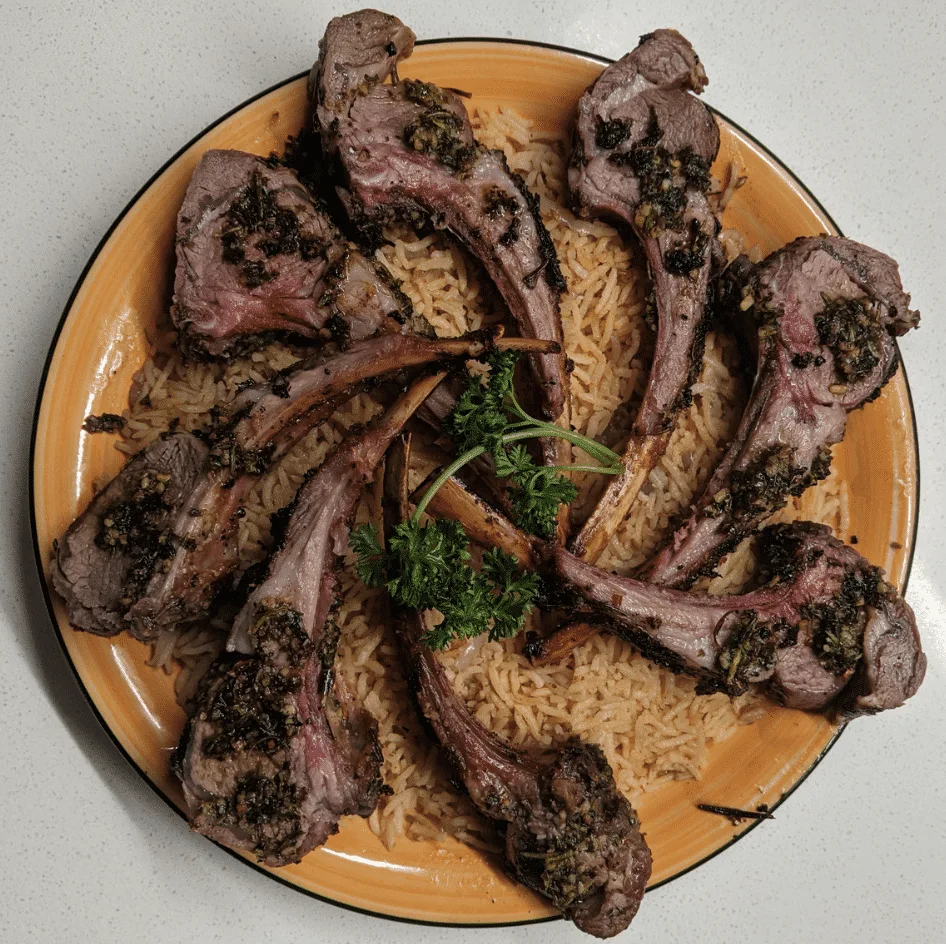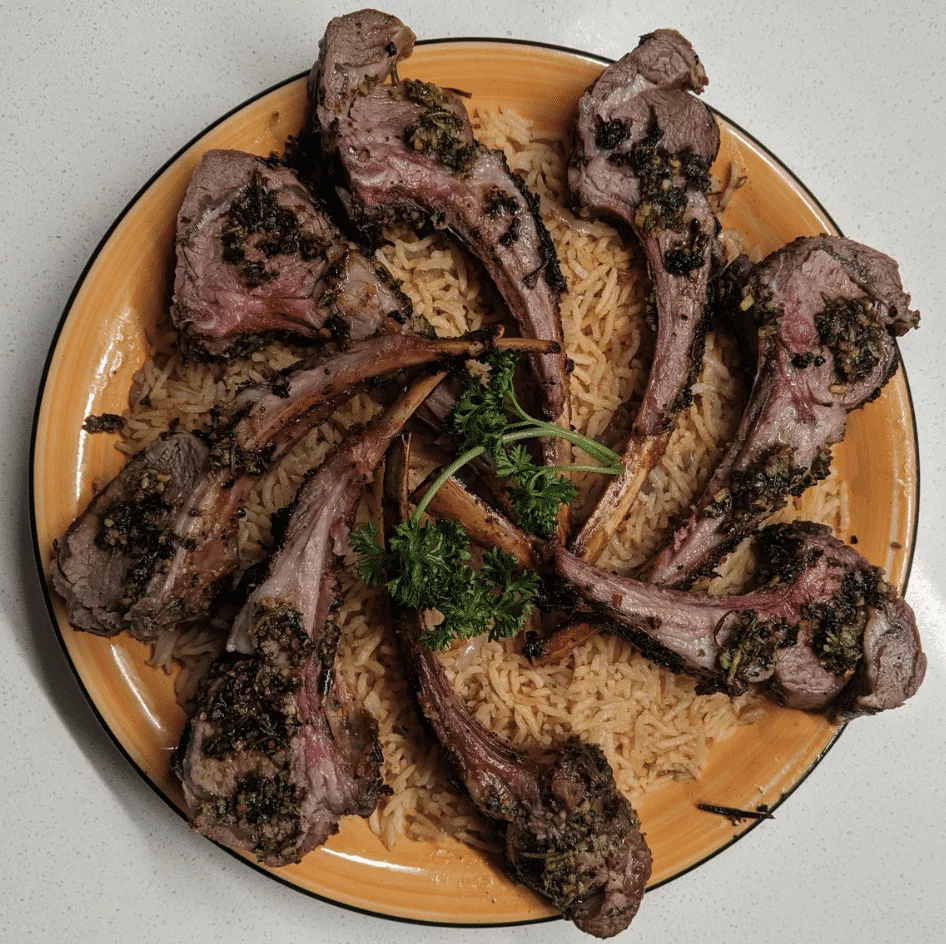
Introduction:
The lamb rack of ribs, a tender and flavorful cut of meat, has been a mainstay in kitchens around the world for centuries. This delectable dish has graced the tables of kings and commoners alike, its versatility and appeal transcending cultures and cuisines. In this blog post, we will explore the captivating history of the lamb rack of ribs, delving into the origins of lamb consumption, the development of various cooking techniques, and the enduring legacy of this mouthwatering dish.
The Origins of Lamb Consumption:
To understand the history of the lamb rack of ribs, we must first examine the origins of lamb consumption. Sheep have been domesticated for thousands of years, with evidence of their use for meat, milk, and wool dating back to 9000 BCE in the regions of modern-day Iran and Iraq. As one of the earliest domesticated animals, sheep played a vital role in the development of human civilization, providing sustenance and materials for clothing and shelter.
Lamb, the meat of a young sheep, has been a popular source of protein in many cultures throughout history. The tenderness and mild flavor of lamb made it an ideal ingredient for a variety of dishes, and the rack of ribs soon emerged as a particularly desirable cut.
(raw piece of meat)
The Lamb Rack of Ribs: A Prized Cut of Meat:
The lamb rack of ribs, also known as the “lamb rack” or “rack of lamb,” consists of the rib bones and the meat attached to them. This cut is typically taken from the front part of the animal and includes eight ribs. A whole rack of lamb is known for its elegant presentation, as the rib bones can be “Frenched,” or trimmed of excess fat and tissue, to create a visually appealing dish.
The tenderness of the meat, coupled with the relatively small amount of connective tissue in the rack, has long made the lamb rack of ribs a highly sought-after cut. The rib bones also act as a natural handle, making the dish easy to eat and enjoy.
Historical Cooking Techniques and Preparation:
Throughout history, various cultures have developed their own methods for preparing and cooking the lamb rack of ribs. Here, we will examine a few notable examples from different regions and time periods:
- Ancient Greece and Rome: In ancient Greece and Rome, lamb was often roasted on a spit over an open fire. Seasonings such as garlic, rosemary, and oregano were used to flavor the meat, and the dish was typically served with fresh vegetables or grains. The Greeks and Romans prized the tender, flavorful meat of the rack, and this cooking technique remains popular in Mediterranean cuisine today.
- Medieval Europe: During the Middle Ages, lamb was a common dish in European feasts and celebrations. The rack of ribs was often roasted on a spit, similar to the techniques used in ancient Greece and Rome. However, medieval cooks would sometimes prepare the rack in more elaborate ways, such as stuffing it with minced meat, dried fruits, and spices before roasting. These rich, flavorful dishes were a favorite among European nobility.
- Persia and the Middle East: Lamb has long been a staple in the cuisines of Persia and the Middle East, and the rack of ribs is no exception. Traditionally, the lamb rack would be marinated in a mixture of yogurt, garlic, and spices before being grilled or roasted. This preparation method, which imparts a tangy, aromatic flavor to the meat, remains popular in Middle Eastern and Persian cuisines today.
(modern oven cooked lamb rack of ribs)
The Global Spread of Lamb Rack of Ribs:
As trade routes expanded and culinary influences began to spread across the globe, the lamb rack of ribs found its way into the kitchens of numerous cultures and regions. Each new destination brought with it unique adaptations and interpretations of the dish, resulting in a diverse array of lamb rack recipes and cooking methods:
- France: The French have long been known for their culinary prowess, and their approach to the lamb rack of ribs is no exception. In France, the rack is often seared in a hot pan before being roasted in the oven, resulting in a perfectly cooked, succulent dish. Classic French preparations may include a Dijon mustard and herb crust or a red wine reduction sauce, showcasing the country’s penchant for rich, flavorful cuisine.
- Britain: In Britain, the lamb rack of ribs has been a popular dish for centuries. Traditional British preparations typically involve roasting the rack with simple seasonings such as rosemary, garlic, and salt. The dish is often served with classic accompaniments like mint sauce, roast potatoes, and steamed vegetables, reflecting the country’s love for hearty, comforting fare.
- India: The diverse and vibrant flavors of Indian cuisine have also found their way into the preparation of lamb rack of ribs. Indian chefs often marinate the rack in a mixture of yogurt, spices, and herbs before grilling or roasting. This imparts a bold, aromatic flavor to the meat and creates a tender, juicy texture. Popular Indian preparations of the lamb rack may include Tandoori or Rogan Josh styles, showcasing the country’s diverse culinary traditions.
- North America: The lamb rack of ribs has also gained popularity in North American cuisine, where it can be found on the menus of fine dining establishments and home kitchens alike. American and Canadian chefs have adopted various preparation techniques from around the world, resulting in a melting pot of flavors and styles. From smoked lamb racks with a Southern barbecue twist to elegant, herb-crusted variations, the lamb rack of ribs has found a welcome home in North American cuisine.
(gourmet audience with lamb: fogo de chao)
The Legacy and Future of Lamb Rack of Ribs:
The lamb rack of ribs has stood the test of time as a culinary classic, its rich history and enduring appeal making it a favorite dish among food lovers worldwide. The versatility of the cut has allowed it to adapt to the unique flavors and techniques of each culture it has encountered, resulting in a truly global dish.
As culinary innovation continues to thrive, there is no doubt that the lamb rack of ribs will remain a beloved staple in kitchens around the world. From traditional roasts to bold, experimental preparations, the future of the lamb rack of ribs is as bright and flavorful as its storied past.
In conclusion, the history of the lamb rack of ribs is a testament to the enduring appeal of this succulent cut of meat. From its ancient origins as a source of sustenance for early civilizations to its modern-day status as a global culinary icon, the lamb rack of ribs has proven itself to be a timeless and versatile dish. So the next time you enjoy a perfectly cooked rack of lamb, take a moment to savor the rich, delicious history behind every bite.

